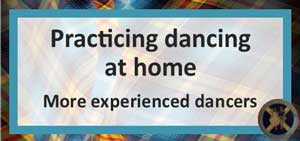
Our tutor Rod Downey gives some tips on dancing the corners in Reel of the Royal Scots and diagonal half rights and lefts
Turning corners in The Reel of the Scots
Diagonal Half Rights and Lefts
More complex variations
Turning corners in The Reel of the Royal Scots
The Reel of the Royal Scots with video is a favourite dance of Kristin’s, and one we often do at club to bagpipe music.
I was always taught the first couple initiates the turns from the sidelines, so at the end of the first 8 bars, the first couple will be just passing through second place on own side, heading for their first corners.
The video is not bad, but you can see the first lady may be a wee bit anxious about getting home, so she is already in the center at the end of eight bars (rather than on the sideline), while her partner isn’t! All steps are not equal length in Scottish country dancing. If you attack your steps you can initiate the turn from the sidelines and still get home in time. Don’t be a one-speed dancer.
The first couple turn their corners for 4 bars but only hold on for 2, so that the corners have two bars dancing the remainder of the turn by themselves. 1C is turn right, pass right, turn right, pass right. So, attack is needed to get home for the first couple.
This is a relatively modern dance (late 20th Century) by Roy Goldring who was a prolific deviser especially of `social’ dances. The keys to this dance are:
- you must think geographically: `Where am I going next?’
- Corners and first couple don’t hold on too long (as the active couple will be misdirected)
- Don’t make the turns too small (as the active couple will be misdirected). So don’t pull yourself too close to the other person in a 4 bar turn as you need to be free for the next place.
Diagonal Half Rights and Lefts
Diagonal Half Rights and Lefts is a modern figure. It is usually done as in my diagram below.
- beginning with the first couple in second place on own side
- and typically with 2nd couple on opposite sides in 3rd place
- and 3rd couple on opposite sides in 1st place (but this is not compulsory) (fig).
The key for a supporting couple, is that if you start coming up keep coming up, and if you start going down keep going down.
If you are beginning as I describe for the typical instance, then:
- 2nd man will move from 3rd lady’s place up through 2nd man’s and up to 1st man’s place
- 3rd woman in 1stman’s place at the top, first goes down to 2nd lady’s place and thence down to 3rd lady’s place
The key for the first couple is that they stay on their own halves. Typically, the lady goes up and the man down on bar 1 to their 1st corner positions, then to second place on opposite sides then double back down for the man and up for the lady. The lady remains in the ‘top half’ of the set, the man in the ‘bottom half’.
I like to think of the first couple’s tracks as a bowtie. My diagram shows the bar by bar breakdown. Of course, you have two bars per hand, and alternate right and left hands. No courtesy turns except on the last left hand.
I believe the figure originated with James B. Cosh in a famous dance called The Irish Rover with video in a book called 22 Scottish Country Dances (and 2 more).
For bars 1-4, the first couple, 2nd man and 3rd lady are the only people involved. It is really important that the second people to be involved in the half rights and lefts (3rd man and 2nd lady) be ready. If they know when and where they are going, then all is good in the group. The Irish Rover is a very fragile dance, and if anything goes wrong, it is extremely hard to recover.
By the way, The Irish Rover is a traditional and quite funny song. Listen to a song by Seamus Kennedy or watch a video of The Pogues and the Dubliners. The club has an archaic recording by Seamus Hallissey on a 45 record, which I played on the St Patrick’s night, when we danced many Irish-related dances including The Irish Rover.
Bruce’s Men with video, has the formation in Strathspey time, and is an example where the start place is non-standard.
More complex variations
More complex variations of the formation occur in lots of places. The Dance of Diamonds with video has diagonal half rights and lefts where those not involved in the half rights and lefts (2L and 3M on bars 1-4, and 3L and 2M on 5-8, if they began in typical positions above) dance around the outside so the formation is non-progressive. The video shows clearly that the formation is tricky.
An aspirational dance with diagonal half rights and lefts is The Border Wizard which has diagonal half rights and lefts in a 7 couple dance, and the 3 simultaneous diagonal half rights and lefts interlock (start going up, keep going up, etc.). I know of no video of this dance. I wrote The Celtic Rover which is a 5 couple version of the Irish Rover, and people find it tricky. No video alas.
Rod Downey
4 June 2020

